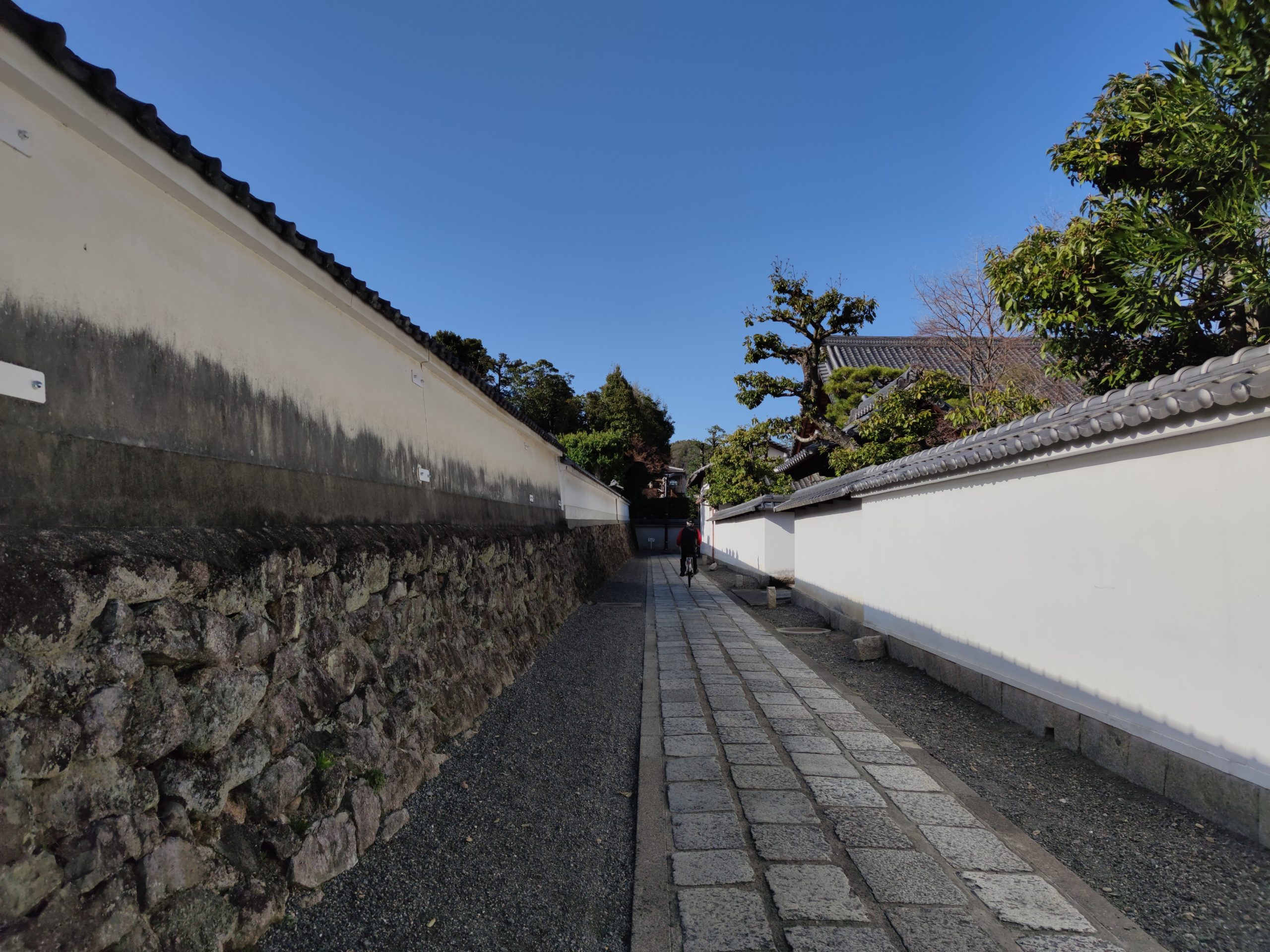Myoshinji Temple is a renowned Zen Buddhist temple located in the northwest part of Kyoto. It is the largest temple complex in the city of Kyoto and serves as the headquarters of the Myoshinji school of the Rinzai sect of Zen Buddhism.
Founded in 1337 during the Kamakura period, Myoshinji Temple has a long and rich history. Emperor Hanazono invited the priest Kanzan Egen from Daitokuji Temple. Egen sought to create a place for the practice and dissemination of Zen Buddhism.
Over the centuries, Myoshinji Temple has expanded its complex, incorporating numerous sub-temples (called “Tacchu”), gardens, and cultural treasures.

Myoshinji Temple has connection to various influential Zen masters throughout history. Many renowned Zen monks, such as Daito Kokushi and Ikkyu Sojun, had been with the temple and had left their mark on its teachings and practices. The temple continues to be an important center for Zen training and meditation, attracting practitioners and seekers of spiritual enlightenment from around the world.
Events
Throughout the year, Myoshinji Temple hosts various events and activities related to Zen Buddhism. These include meditation retreats, lectures, and workshops, providing opportunities for individuals to deepen their understanding of Zen philosophy and practice.
Visiting Myoshinji Temple offers a chance to experience the serenity and contemplative atmosphere of Zen Buddhism. The combination of its vast temple grounds, beautiful gardens, and rich Zen heritage makes it a significant cultural and spiritual destination in Kyoto.
A number of Myoshinji’s sub-temples have important cultural properties.

Many sub-temples have small gardens and the surrounding greenery makes you feel as if you have wandered into another world.






Walking along the stone-paved path lined on both sides with sub-temples, you will reach the center of Myoshin-ji Temple. Here you can visit the Hodo, Kuri, Daihojo, and other buildings.
Buildings in Myoshinji Temple
While it is not possible to cover all the buildings of Myoshinji in detail, here are some notable ones:
- Hatto (Dharma Hall): The Hatto is the main hall of Myoshinji Temple and serves as the central gathering place for ceremonies, lectures, and Zen training. Hatto hosts a famous ceiling painting of a dragon by Tan-yu Kano in Edo Period.
- Hojo (Abbot’s Quarters): The Hojo is the residence of the temple’s abbot, the head of the Myoshinji school. It is a simple and elegant structure, featuring tatami mat floors, sliding doors, and a small Zen garden. The Hojo provides a space for the abbot’s living quarters, as well as for meetings and administrative functions.
- Butsuden (Buddha Hall): The Butsuden is the hall dedicated to housing Buddhist statues and serving as a place of worship. It contains a central altar with a main Buddha image, as well as other important Buddhist deities or bodhisattvas. The Butsuden is a space for devotees to pay their respects, offer prayers, and engage in religious rituals.
- Sodo (Monks’ Hall): The Sodo is the meditation hall where monks and practitioners gather for zazen (sitting meditation). It is a quiet and serene space conducive to the practice of Zen meditation.
- Kuri (Living Quarters): The Kuri is the living quarters for resident monks and trainees. It includes dormitory-style rooms, dining areas, and communal spaces for daily activities and interactions. The Kuri serves as a place of communal living and support for the monks’ spiritual practice.









Sanmon Gate
The Sanmon Gate of Myoshinji Temple was rebuilt in 1599. It is a magnificent two-story vermilion-lacquered gate. You can see the interior of Sanmon only on special opening days. Inside, Kannon Bosatsu (Goddess of Mercy) and 16 arhats are enshrined. The ceiling, walls, beams, and pillars are also painted in extreme colors. The paintings of dragons and celestial maidens are particularly impressive.

Sub-temples (Tacchu) of Myoshinji
The temple complex of Myoshinji covers an extensive area of approximately 82 hectares. There are several sub-temples within the complex, each with its own unique atmosphere and architectural features. These sub-temples may have additional halls, gardens, tea houses, or historical structures that are worth exploring.
Some of the notable sub-temples include Taizo-in, Keishun-in, Torin-in, Daisin-in, Daiou-in, Shunko-in, Esho-in, and Ryogen-in, among many others.
Related articles:
[…] of the sub-temples near the Myoshinji Butsuden is Taizo-in Temple. Taizo-in Temple is home to the National Treasure […]
[…] Keishun-in Temple is a sub-temple of Myoshinji Temple. […]
[…] Temple is one of the sub-temples of Myoshin-ji Temple and is located on the east side of the temple grounds. The temple is usually closed to the public, […]
[…] was newly painted in 1997, and to be honest, it was not as powerful as the Unryuzu in Shokokuji and Myoshinji temples. If you ask me if it is worth paying for, I would not recommend […]
[…] Ninnaji Temple (仁和寺) Myoshinji Temple (妙心寺) […]
[…] Myoshinji Temple (妙心寺) Koryuji Temple (広隆寺) […]
[…] of the Kyoto Gozan was finalized by Ashikaga Yoshimitsu in the Muromachi period (1336-1573), but Myoshinji Temple and other large temples of the same Rinzai sect opposed the temple ranking and were said to be at […]
[…] Ryoanji Temple (龍安寺) Kyutei Omuro (旧邸御室) Myoshinji Temple (妙心寺) […]
[…] When you walk Kinukake-no-michi, you can also visit neaby places such as Toji-in Temple, Kyutei Omuro and Myoshinji Temple. […]
[…] Temple is a sub-temple of Myoshinji Temple and operates a lodging house. In the past, monks from temples of the Myoshinji sect throughout […]
[…] Temple, one of the sub-temple of Myoshin-ji Temple, was built in 1603 by Ishikawa Mitsutada to mourn the loss of his father. His father died in […]
[…] Myoshinji Temple and Houkongoin Temple stand at the western foot of the hill, and Ninnaji Temple stands at the northern foot. […]
[…] 石柱にある至道無難禅師は、江戸時代前期に本陣の子として生まれ、後に臨済宗妙心寺派の高僧となった人だそうです(Myoshinji Temple in Kyoto)。 […]